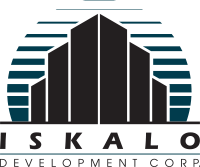Many workers started hearing about hybrid workplaces and flex space building design not long after quarantine initially happened. Growing interest turned into action, with building owners and corporate offices making changes to better suit the needs of their workers. The COVID-19 pandemic made traditional office spaces a thing of the past as flex space design took over as the new normal in the working world. With more people working from home or having to work a more flexible schedule, flex space design ideas became a smart choice for many site developers to look into.
Ongoing Change Means Ongoing Interest
The reason so many businesses go through a rebrand or website redesign is because it keeps their company fresh and interesting. The same goes for work environments—especially after a life-changing pandemic makes the impact that COVID-19 did.
Post-COVID office design has changed how many business owners and employees see the way they get work done. This change caused more interest in flexible workspaces for those who now work remotely or partially in their company office. Though the pandemic negatively touched everyone’s life, it created positive change within the work community. Creating flex space building designs where remote workers find a sense of community is something that will create ongoing interest as flex spaces continue to grow.
Flexible Spaces Focus on Well-Being
Not everyone works well in the same kind of environment. While some people prefer sterile cubicles and enclosed offices, other people would rather focus in an open, cozy environment. Flex space design gives different options for where visitors wish to work and how often they want to work in that specific space. There is no time constraint for flexible office spaces and co-workers change daily—potentially making it easier for those who do struggle with anxiety.
Post-COVID office designs—such as a flex space design—have helped improve the mental health and well-being of many workers. Instead of being in one space all day and having to run through an office door no later than a specific time, workers have more choice in how their day is run. That control can be a huge game-changer in the world of well-being support.

Stats Proving Flex Spaces are Here to Stay
Research over the course of 2020 and 2021 has shown how flex space design and hybrid workspaces benefit many workers, business leaders and building owners.
- Flexible workspaces and coworking offices could double or triple over the next five years in the United States.
- A growing percentage of workers work in flexible workspaces—an increase of 30% to 40% when comparing pre-COVID and post-COVID.
- 10% to 25% of landlords will allocate materials and assets toward flex space design leases.
- There has been a 14% increase since 2019 in workers using coworking or flexible offices at least once a week.





